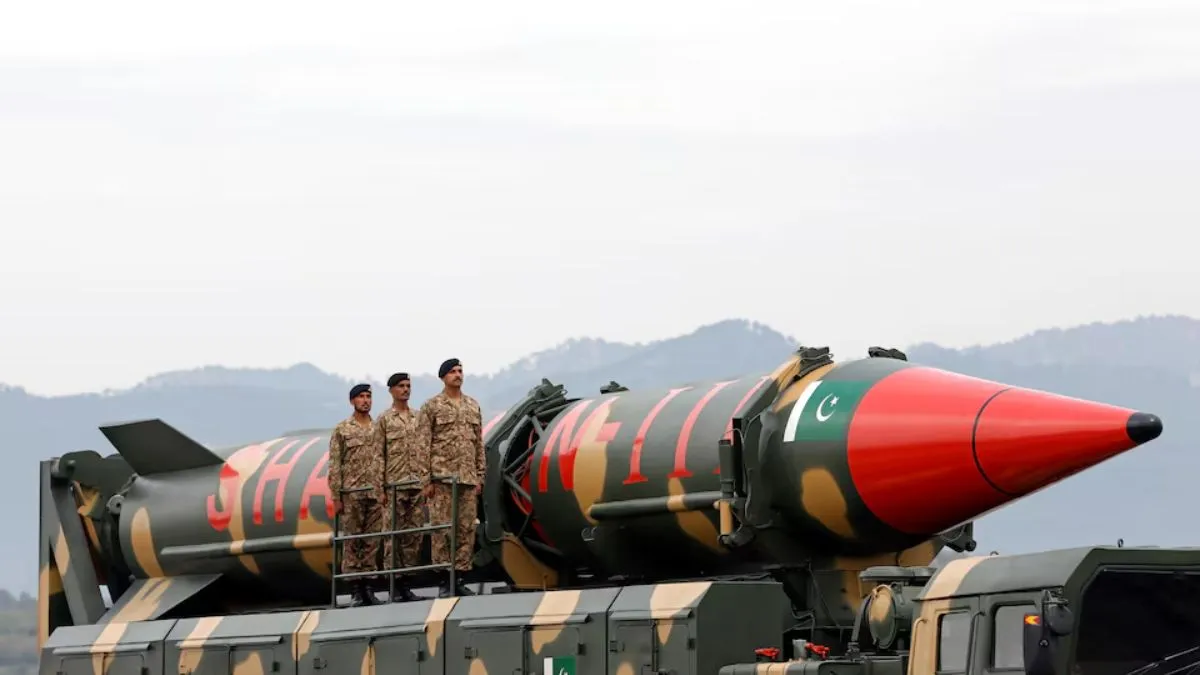- By Supratik Das
- Sat, 10 May 2025 08:39 AM (IST)
- Source:JND
In a major escalation, India launched precision strikes against at least four airfields within Pakistan at the crack of dawn on Saturday. The retaliatory strikes came on the heels of a series of Pakistani drone raids and missile launches on Indian military and civilian infrastructures. Pakistan's Fatah-II hypersonic ballistic missile was intercepted successfully over Sirsa, Haryana, by India's Barak-8 air defence system. The missile, which was thought to be targeting the National Capital Region, was a major escalation as Pakistan initiated its offensive mission "Operation Bunyan ul Marsoos".
The Ministry of Defence said drone activity was spotted at 26 sites on the International Border and Line of Control (LoC), including in Baramulla, Srinagar, Avantipora, Nagrota, Jammu, Ferozpur, Pathankot, Fazilka, Lalgarh Jatta, Jaisalmer, Barmer, Bhuj, Kuarbet, and Lakhi Nala. An armed drone attacked a residential area in Ferozpur, causing a local family member to be injured. The territory has been decontaminated, and the one injured is under treatment," stated the ministry. On the evening of May 7–8, India too had neutralised a massive Pakistan drone and missile attack on several Indian military establishments. In the operation, Indian troops allegedly obliterated an air defence system deployed in Lahore.
Fatah-II Missile: Pakistan’s Hypersonic Battlefield Weapon
The Fatah-II is a next-generation guided artillery rocket system developed by Pakistan with an estimated range exceeding 400 kilometers. It is the upgraded variant of the Fatah-I, offering improved range, precision, and destructive capability. The Fatah-II is often likened to modern battlefield missile systems such as the U.S. HIMARS-launched GMLRS and China’s PHL-series. It’s designed for quick, precision strikes and is capable of carrying both conventional and tactical nuclear warheads. The missile is classified as hypersonic, meaning it can travel at speeds exceeding Mach 5, making it extremely difficult to intercept without advanced air defence systems like India’s Barak-8.
Key Features of Fatah-II:
• Range: Over 400 km
• Payload: Capable of delivering conventional or low-yield tactical nuclear warheads
• Speed: Hypersonic (Mach 5 or higher)
• Purpose: Battlefield use against strategic infrastructure, military bases, or large troop formations
• Precision: Equipped with advanced guidance systems for pinpoint targeting
Unlike strategic missiles such as the Shaheen-III or Ghauri-II, the Fatah-II is aimed at tactical battlefield deployment, allowing Pakistan to threaten military targets and infrastructure without necessarily crossing the nuclear escalation threshold. Its deployment near the India-Pakistan border and its alleged launch aimed at Delhi mark a significant escalation and have triggered urgent calls for strategic preparedness across Indian defence circles.
Pakistan's Missile Arsenal
• Fatah-II: 400+ km range hypersonic ballistic missile, can carry tactical nuclear warheads.
• Shaheen-III: The longest-range missile (2,750 km) can target deep inside India and beyond.
• Ghauri-II: 2,000+ km range, a variant of North Korea's Nodong missile.
• Babur-3: Submarine-launched cruise missile with a 450 km range.
• Nasr (Hatf-IX): Tactical nuke-capable 70 km range missile for battlefield use.
• Ghaznavi (Hatf-III): nuclear-capable SRBM with a 290–320 km range.
* Abdali (Hatf-II): 200–300 km range SRBM with inertial guidance.
* Harba & Zarb: 280–450 km range coastal defence and cruise missiles.

